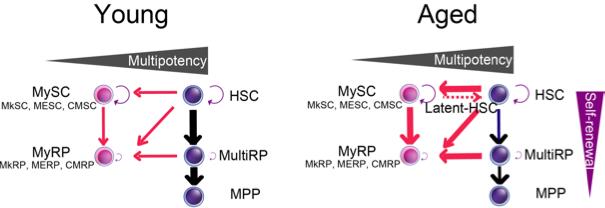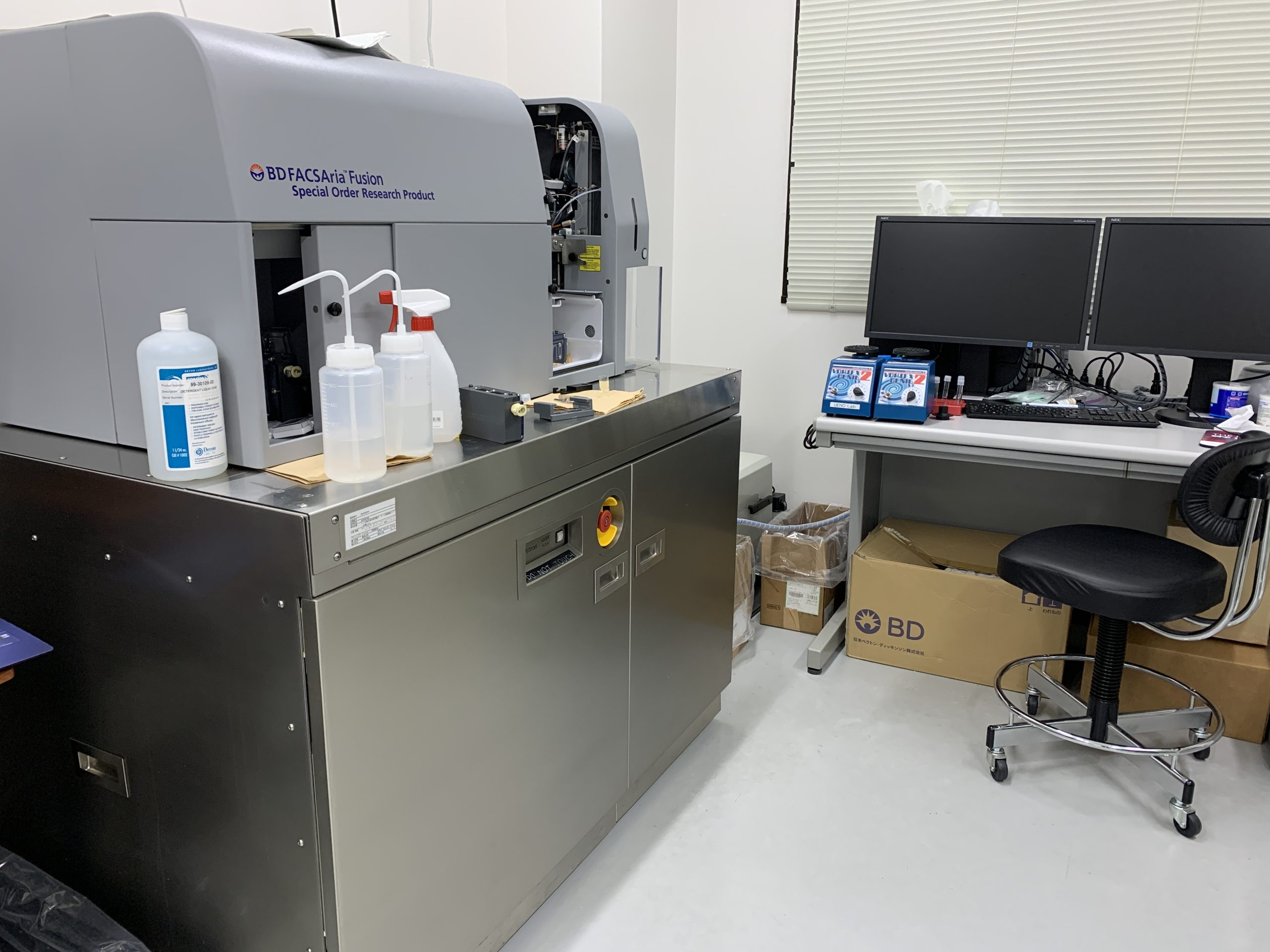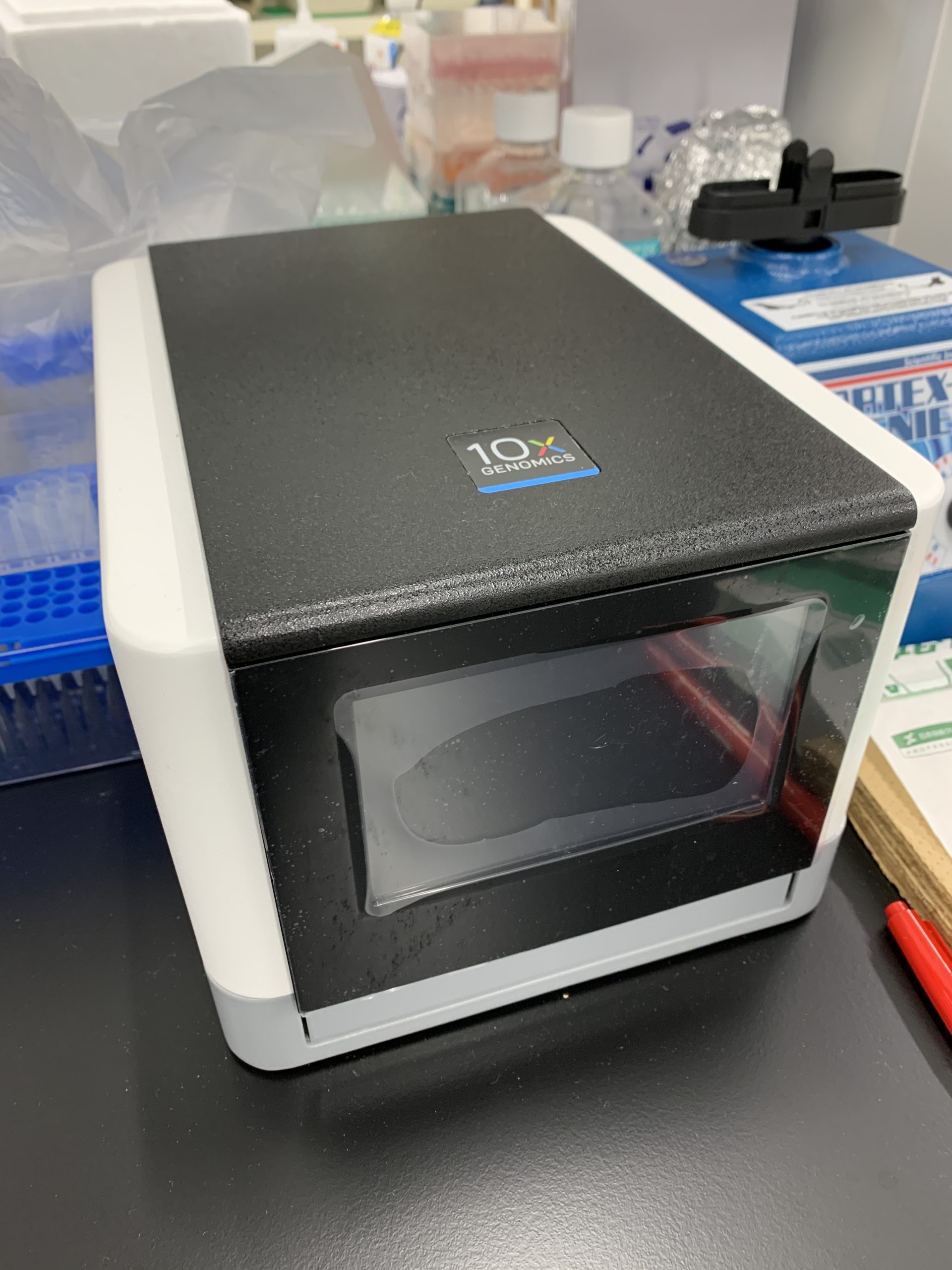Research


- Mission
- Research Subject1 Elucidation of the mechanism of self-renewal and differentiation of hematopoietic stem cells
- Research Subject2 Elucidation of the mechanism of aging of hematopoietic stem cells
- Research Subject3 Elucidation of the mechanism of hematopoietic tumors
- Interdisciplinary research "A Single-Cell View of Hematopoietic Stem Cells."
Mission
hemopoietic stem cell (haemopoietic)
Stem cells are unique cells that have the ability to self-renew and multiply, and maintain cellular homeostasis throughout the body. However, as we age, their function changes and their homeostasis is disrupted, which is known to cause various diseases.
Our research group focuses on blood stem cells (hematopoietic stem cells), which are used clinically among stem cells. HSCs are capable of reconstructing the entire blood system even with the transplantation of a 1single cell, but it is known that the number of certain HSCs increases with age (clonal hematopoiesis) and that this is involved in blood diseases. However, the mechanism of this increase is still unclear.
Using mice, non-human primates, and humans as models, and combining various state-of-the-art measurement technologies, we aim to elucidate (1) the mechanisms of self-renewal and pluripotency of HSCs, (2) the mechanisms of age-related decline in HSC function and clonal hematopoiesis, and (33) the pathogenesis of hematological diseases such as acute leukemia, myelodysplastic syndrome, and lymphoma. We aim to elucidate the pathogenesis of hematological diseases such as acute leukemia, myelodysplastic syndrome, and lymphoma. Through such understanding, we aim to develop technologies for stem cell maintenance and amplification that will lead to advances in regenerative medicine, as well as to understand and clarify various pathological conditions and develop therapeutic methods.
Research Subject1 Elucidation of the mechanism of self-renewal and differentiation of hematopoietic stem cells
HSCs repeatedly self-renew and differentiate through symmetric and asymmetric division to maintain the homeostasis of the hematopoietic system, but the mechanism of this process is unknown. However, the mechanism of this process is unclear, possibly because it is not easy to track the division of HSCs at the single cell level. By combining the paired-daughter cell assay with single-cell transplantation, we were able to capture symmetric and asymmetric division in vivo for the first time (Figure). We are now using single-cell analysis, including single-cell transplantation and single-cell gene expression analysis, to elucidate self-renewal and differentiation through symmetric and asymmetric division. As models, we are conducting research using humans, monkeys, and mice.

Research Subject2 Elucidation of the mechanism of aging of hematopoietic stem cells
It is known that hematopoietic stem cells themselves undergo changes with aging. Using single-cell transplantation, we have shown that mouse HSCs change specifically with age (Fig.), but the function and significance of these changes remain unclear. However, the function and significance of these changes remain unclear. We are currently using single cell analysis to elucidate these changes.
In addition, certain genetic mutations (DNMT3A, TET2, SF3B1, etc.) accumulate in humans with aging, even in healthy individuals. This is called age-related clonal hematopoiesis, but the mechanism of how clonal hematopoiesis leads to hematopoietic tumors has not been clarified. Our goal is to elucidate the mechanism of clonal hematopoiesis itself and how hematopoietic tumors arise from it.

Research Subject3 Elucidation of the mechanism of hematopoietic tumors
We have shown that genetic mutations in RNA splicing molecules and other genes are involved in hematological diseases such as myelodysplastic syndromes. Since these mutations are known to increase with the aging of HSCs, it is strongly suggested that HSC aging is involved in the development of hematopoietic tumors. We aim to elucidate the mechanism of the relationship between HSC aging and HSCs.
Interdisciplinary research "A Single-Cell View of Hematopoietic Stem Cells."
Summary statement;.
Hematopoietic stem cells are undifferentiated cells that are capable of self-renewal and pluripotency. Single-cell transplantation is required to experimentally demonstrate self-renewal and pluripotency, but it is not easy and is not commonly performed. In this laboratory, single cell transplantation is routinely performed, and single cell gene expression analysis is added to elucidate the functional mechanisms of HSCs.
1. Multi-color cell sorter
The BD Aria Fusion multi-color cell sorter allows for single-cell preparative sorting. It is equipped with a total5 of 488 nm, 637 nm, 405 nm, 561 nm, and 355 nm lasers, and can sort cells by up18 to three different colors.

BD Aria Fusion
2. single cell transplant
Perform single-cell sorting with a multi-color sorter, and then perform single-cell implantation. For detailed protocol, please refer to the literature.
Single cell sorted mouse hematopoietic stem cells and dynamics of chimerism after single cell transplantation.
3. Single cell gene expression analysis
The Chromium Controller (10x Genomics) enables single cell gene expression analysis.

Chromium Controller
4. Paired-daughter cell analysis
This is done using a micromanipulator.

Paired-daughter cell assay of mouse hematopoietic stem cells
5. Multifaceted studies using mouse, monkey, and human samples
A variety of samples are available through collaboration with Shiga University of Medical Science and Kyoto University Hospital.
6. Interdisciplinary research environment
Researchers from various fields belong to ASHBi, allowing for interdisciplinary research. In particular, we are incorporating analysis using analytical techniques from the field of mathematics.


